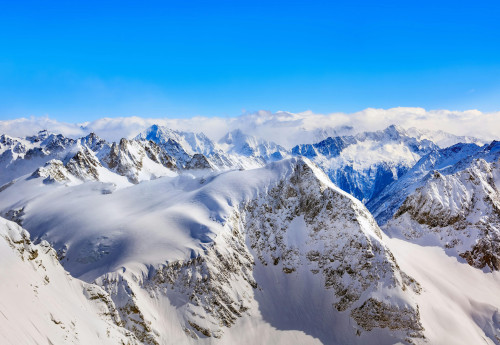10th Sep, 2024
Annapurna Himalaya Range Nepal: A Glimpse into Nepal’s Himalaya Region
- Magnificent Himalayan Treks
The Annapurna Himalaya Range is one of the most famous and stunning ranges in the Himalayas, located in north-central Nepal.
This magnificent Annapurna Himalaya range includes several prominent peaks, with Annapurna I standing as the 10th highest mountain in the world at 8,091 meters (26,545 feet). Other notable peaks in the range include Annapurna II (7,937m), Annapurna III (7,555m), Annapurna IV (7,525m), Gangapurna (7,455m), Hiunchuli (7,441m), and the sacred Machhapuchre, also known as Fishtail Mountain (6,993m).
The name "Annapurna" means "Goddess of Harvests" in Sanskrit, reflecting the region's rich natural beauty and cultural significance. The Annapurna Himalaya attracts thousands of trekkers, climbers, and adventurers every year, drawn by its breathtaking views, diverse landscapes, and rich cultural heritage.
The Kali Gandaki Gorge, the world's deepest gorge, cuts through the range, further adding to its geographical significance. The Annapurna region is important not only for its natural beauty but also for its role in supporting the livelihoods of local communities through agriculture, tourism, and trade.
Its diverse terrain and cultural heritage make it a vital part of Nepal's identity and a key destination for adventurers and nature lovers from around the globe.
Table of Contents
Popular Trekking Route in the Annapurna Himalaya Region
The Annapurna Himalayas are one of the most popular trekking destinations in the world, offering a variety of routes that cater to different experience levels. These routes provide a unique experience, allowing trekkers to immerse themselves in the natural beauty and cultural richness of the Annapurna region. Here are descriptions of the popular trekking destinations in the Annapurna Himalaya range:
Annapurna Circuit Trek

| Duration: | 15 to 20 days |
| Distance: | 160-230 km (100-145 miles) |
| Highest Elevation: | Thorong La Pass at 5,416 meters (17,769 feet) |
| Difficulty: | Moderate to strenuous |
| Best Time to Visit: | March to May and September to November |
The Annapurna Circuit Trek is one of the most popular and iconic treks in Nepal, often listed among the world’s best long-distance hikes. The circuit offers an extraordinary variety of landscapes, from lush subtropical forests and terraced fields to arid deserts similar to the Tibetan plateau. Trekkers pass through picturesque villages and dense rhododendron forests and enjoy panoramic views of Annapurna, Dhaulagiri, Machhapuchre, and other peaks.
The highlight of the trek is crossing the Thorong La Pass, a challenging but rewarding experience that offers spectacular views. Along the way, trekkers can explore the culture and traditions of different ethnic groups, including the Gurung, Thakali, and Tibetan-influenced communities.
Annapurna Base Camp (ABC) Trek

| Duration: | 7 to 12 days |
| Distance: | Approximately 110 km (68 miles) |
| Highest Elevation: | Annapurna Base Camp at 4,130 meters (13,549 feet) |
| Difficulty: | Moderate |
| Best Time to Visit: | March to May and September to November |
The Annapurna Base Camp Trek, also known as the Annapurna Sanctuary Trek, is a shorter yet equally rewarding trek that takes you into the heart of the Annapurna massif. Starting from the city of Pokhara, this trek leads you through diverse terrains, including terraced fields, bamboo forests, and high-altitude landscapes.
The trek ends at Annapurna Base Camp, where trekkers are surrounded by towering peaks such as Annapurna I (8,091 meters), Annapurna South, Hiunchuli, and Machhapuchre (Fishtail Mountain). The sunrise over the Annapurna Sanctuary is a truly magical experience, making the trek effort well worth it.
Ghorepani Poon Hill Trek

| Duration: | 4 to 7 days |
| Distance: | 45-60 km (28-37 miles) |
| Highest Elevation: | Poon Hill at 3,210 meters (10,531 feet) |
| Difficulty: | Moderate |
| Best Time to Visit: | Year-round, with spring and autumn being the most popular |
The Ghorepani Poon Hill Trek is a relatively short and easy trek, making it a perfect option for those with limited time or who are new to trekking in Nepal. Despite its shorter length, the trek offers incredible views of the Annapurna and Dhaulagiri ranges. The highlight is the early morning hike to Poon Hill, where trekkers can witness a spectacular sunrise over the mountains.
The trek passes through charming villages, dense rhododendron forests, and terraced farmlands, providing a glimpse into the local culture and lifestyle. It is also a great option for those looking to experience the beauty of the Himalayas without risking too high into the mountains.
Mardi Himal Trek

| Duration: | 5 to 7 days |
| Distance: | 50-60 km (31-37 miles) |
| Highest Elevation: | Mardi Himal Base Camp at 4,500 meters (14,764 feet) |
| Difficulty: | Moderate |
| Best Time to Visit: | March to May and September to November |
The Mardi Himal Trek is an off-the-beaten-path adventure that takes you to the base of Mardi Himal, a lesser-known peak in the Annapurna region. This trek offers a quieter, more isolated experience compared to the busier trails like the Annapurna Circuit. The trek features dense forests, high ridges, and stunning views of Machhapuchre, Annapurna South, and Hiunchuli. It is an ideal trek for those seeking a more quiet experience with the mountains, away from the crowds.
Upper Mustang Trek
.jpg)
| Duration: | 12 to 16 days |
| Distance: | Approximately 160 km (100 miles) |
| Highest Elevation: | 3,840 meters (12,598 feet) at Lo Manthang |
| Difficulty: | Moderate |
| Best Time to Visit: | March to May and September to November |
The Upper Mustang Trek takes you into the once-forbidden kingdom of Mustang, a remote and beautiful region in the rain shadow of the Himalayas. The landscape here is unlike any other in Nepal, characterized by rugged desert terrain, deep gorges, and colorful rock formations. The trek also offers a glimpse into Tibetan culture, with ancient monasteries, chortens, and the walled city of Lo Manthang, the capital of Upper Mustang. This trek is ideal for those interested in cultural immersion and unique, dramatic landscapes.
Dhaulagiri Circuit Trek

| Duration: | 18 to 21 days |
| Distance: | Approximately 170 km (106 miles) |
| Highest Elevation: | French Pass at 5,360 meters (17,585 feet) |
| Difficulty: | Strenuous |
| Best Time to Visit: | April to May and September to November |
The Dhaulagiri Circuit Trek is one of the most challenging treks in Nepal, circling the world’s seventh-highest mountain, Dhaulagiri (8,167 meters). This trek is for experienced trekkers looking for a serious adventure, as it involves crossing several high passes, navigating glaciers, and camping in remote areas. The trek offers incredible views of Dhaulagiri, Tukuche Peak, and the Hidden Valley. The Dhaulagiri Circuit is a less-traveled route, providing a true wilderness experience in one of Nepal’s most rugged and remote regions.
Nar Phu Valley Trek

| Duration: | 10 to 17 days |
| Distance: | Approximately 80-100 km (50-62 miles) |
| Highest Elevation: | Kang La Pass at 5,320 meters (17,454 feet) |
| Difficulty: | Moderate to strenuous |
| Best Time to Visit: | March to May and September to November |
The Nar Phu Valley Trek is a hidden gem in the Annapurna region, offering trekkers a chance to explore the remote and unspoiled valleys of Nar and Phu. This trek combines the cultural riches of the Tibetan-influenced villages with the stunning natural beauty of the region. The trek includes crossing the Kang La Pass, which offers panoramic views of Annapurna II, Gangapurna, and Tilicho Peak. The Nar Phu Valley Trek is perfect for those looking to explore a less-traveled route while still enjoying the majestic scenery of the Annapurna region.
Each of these treks offers a unique experience, catering to different levels of trekking experience and interests. Whether you are seeking cultural immersion, challenging high-altitude passes, or quiet, off-the-beaten-path adventures, the Annapurna region has something for every trekker.
Best Time to Visit the Annapurna Mountain Range
The best time to visit the Annapurna Himalayas is during the spring (March to May) and autumn (September to November) seasons. The weather is most stable during these periods, with clear skies and mild temperatures, making it ideal for trekking and exploring the region.
In spring (March to May), the hillsides come alive with blooming rhododendrons and other wildflowers, adding vibrant colors to the already stunning landscapes.
Autumn (September to November) is equally popular, offering crisp, clear weather and excellent visibility of the snow-capped peaks. It is also when many festivals are celebrated, providing a rich cultural experience alongside the natural beauty.
After the summer months (June to August) bring the monsoon season, with heavy rains and slippery trails, they also offer lush green landscapes and fewer crowds.
Winter (December to February) can be cold, especially at higher altitudes. Still, it is a great time for those seeking solitude and the pristine beauty of snow-covered trails. However, some high-altitude passes may be closed due to snow during winter.
The optimal seasons for visiting the Annapurna region are spring and autumn when the weather is most favorable for outdoor activities.
Climbing History of Annapurna Mountain
The climbing history of the Annapurna range is both legendary and significant in the world of mountaineering. Annapurna I, the tallest peak in the range at 8,091 meters (26,545 feet), holds a special place in history as the first 8,000-meter peak ever successfully climbed. In 1950, a French expedition led by Maurice Herzog and Louis Lachenal made the groundbreaking ascent, marking a monumental achievement in high-altitude climbing. However, their success came at a high cost, as both climbers suffered severe frostbite, leading to the amputation of several fingers and toes.
Since that historic climb, the Annapurna mountains have continued to challenge and inspire climbers worldwide. The range is known for its difficult terrain and unpredictable weather, making it one of the most dangerous and respected climbing destinations. Despite these challenges, numerous expeditions have tackled various peaks in the range, each contributing to the rich climbing heritage of the Annapurna.
Annapurna I, in particular, has a reputation for being one of the deadliest mountains, with a high fatality rate among climbers. However, this has not deterred adventurers from attempting the summit. Other notable peaks in the range, such as Annapurna II, III, and IV, have also seen significant ascents, each adding to the legacy of exploration and endurance that defines the Annapurna Himalayas.
Beyond the Peaks: Other Unique Attractions in the Annapurna Himalaya Region
The Annapurna Himalaya region is globally renowned for its challenging treks and majestic peaks. Still, there's far more to discover beyond its towering summits. This diverse area of Nepal offers a rich tapestry of cultural, spiritual, and natural wonders that cater to all kinds of travelers. Whether you're seeking a spiritual journey, cultural immersion, wildlife encounters, or simply a calm escape in nature, the Annapurna region promises an unforgettable experience that goes well beyond its famous trails. Let’s explore some of the unique attractions that make this region a truly enriching destination.
Traditional Villages
The Annapurna region is home to many traditional villages that provide a glimpse into the lives of the indigenous communities. Among them, Ghandruk and Manang stand out as ideal examples of Nepali village life. In Ghandruk, the heart of the Gurung community, visitors can immerse themselves in local culture by staying in traditional teahouses, sampling authentic Nepali cuisine, and experiencing the daily routines of the villagers. Manang, on the other hand, offers a look into the Thakali culture with its unique customs, architecture, and stunning views of the Annapurna and Gangapurna mountains. Walking through these villages not only enriches your understanding of Nepali culture but also offers serene landscapes that contrast with the more rugged trekking paths.
Annapurna Conservation Area
As Nepal's largest protected area, the Annapurna Conservation Area spans diverse ecosystems ranging from sub-tropical forests to alpine meadows and snowy deserts. This conservation area is a haven for wildlife enthusiasts, offering a chance to spot rare species such as the elusive snow leopard, red panda, blue sheep, and over 450 species of birds. The conservation efforts here aim to protect both the wildlife and the traditional ways of life of the local communities. Trekkers can engage with conservation projects, visit eco-lodges, and learn about the region's biodiversity through various educational programs. This makes it a rewarding experience beyond the typical trekking routes.
Spiritual and Religious Sites
For those seeking spiritual enrichment, the Annapurna region has sacred sites that both Hindus and Buddhists worship. One of the most significant is the Muktinath Temple, nestled at the base of the Thorong La pass. This ancient temple complex, which houses 108 waterspouts and an eternal flame, draws pilgrims from across Nepal and India who come to bathe in its holy waters. The area is also home to numerous monasteries and chortens that offer a peaceful environment for meditation and reflection. The blend of natural beauty and spiritual significance makes these sites not just places of worship but also peaceful spots for visitors to connect with the spiritual heritage of the Himalayas.
Hot Springs at Tatopani
After days of trekking through the rugged terrain, the hot springs at Tatopani offer a perfect rest. Known for their therapeutic properties, these naturally heated pools provide a relaxing way to soothe sore muscles while surrounded by stunning views of the Annapurna range. The village of Tatopani, which means “hot water” in Nepali, has long been a popular stop for trekkers looking to relax. The experience of soaking in warm waters with snow-capped peaks in the background is an essential highlight that brings comfort and relaxation to any Annapurna journey.
Outdoor Activities

Beyond trekking, the Annapurna region offers a range of thrilling outdoor activities that showcase its stunning landscapes from different perspectives. Paragliding over the Pokhara Valley provides a bird’s-eye view of the Himalayas and the Fewa Lake, making it one of the most popular adventure sports in Nepal. For those who prefer to stay grounded, exploring the Kali Gandaki Gorge—the deepest gorge in the world—offers dramatic scenery and the chance to discover fossils dating back millions of years. These activities not only add excitement to your visit but also allow you to appreciate the region's geological wonders and breathtaking beauty.
The Annapurna Himalaya region is more than just a destination for trekkers and climbers; it's a vibrant and complex area that offers something for every traveler. From exploring traditional villages and encountering rare wildlife to finding peace in spiritual sites and relaxing in hot springs, the region presents a rich array of experiences that extend well beyond its peaks. By delving into these unique attractions, visitors can uncover the diverse and enchanting character of the Annapurna Himalayas, making their journey truly unforgettable.
Which trek is easier: Annapurna vs. Everest?
The Annapurna Himalaya Region Nepal treks are generally considered easier than the Everest Base Camp (EBC) trek, primarily due to lower altitudes, shorter durations, and more accessible landscape. Most Annapurna treks, such as the Annapurna Base Camp and Ghorepani Poon Hill treks, stay below 4,500 meters, reducing the risk of altitude sickness and requiring fewer acclimatization days. The trails in the Annapurna region are also more varied, passing through subtropical forests, alpine meadows, and even arid high-altitude deserts, offering trekkers a diverse range of landscapes without the extreme elevation challenges found on the EBC trek. Additionally, the Annapurna region is more easily accessible from Pokhara, with fewer logistical challenges compared to the EBC trek, which begins with a flight to the high-altitude Lukla airstrip.
In contrast, the Everest Base Camp trek involves higher altitudes, with the highest point being 5,364 meters at the base camp. Trekkers spend many days above 4,000 meters, increasing the risk of altitude sickness and necessitating more acclimatization days. The terrain is rugged, with steep ascents and descents, and the trek itself is generally longer and more strenuous. However, the EBC trek offers the reward of stunning, up-close views of some of the world's highest peaks, including Everest, Lhotse, and Nuptse, and a deep cultural experience as trekkers pass through Sherpa villages and ancient monasteries. While both regions offer incredible trekking experiences, the Annapurna treks provide a more moderate challenge, making them accessible to a wider range of trekkers.
Conclusion
The Annapurna Himalaya range is more than just a collection of towering peaks; it is a place where nature, culture, and adventure converge to create an unforgettable experience. The charm of Annapurna lies not only in its breathtaking landscapes but also in its deep cultural heritage and the warmth of its people. Whether you are a seasoned climber seeking to conquer one of the world's most challenging summits or a traveler looking to explore vibrant villages and cool valleys, the Annapurna region has something to offer everyone.
The rich history of exploration, the vibrant biodiversity, and the spiritual significance of the area make it a destination that echoes deeply with all who visit. Each trek and trail tells a story of resilience, beauty, and the enduring spirit of both the mountains and those who call them home. As you leave the Annapurna behind, the memories of snow-capped peaks, starry nights, and the sound of prayer flags fluttering in the wind will stay with you, a reminder of the profound connection between nature and humanity. With all its challenges and rewards, the Annapurna range invites us to reflect on the true essence of adventure and the timeless appeal of the Himalayas.
Recent From Blog
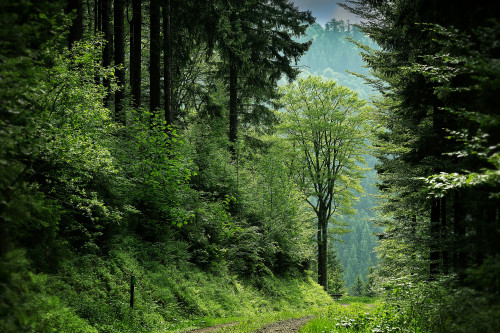
13th Oct, 2025

9th Oct, 2025
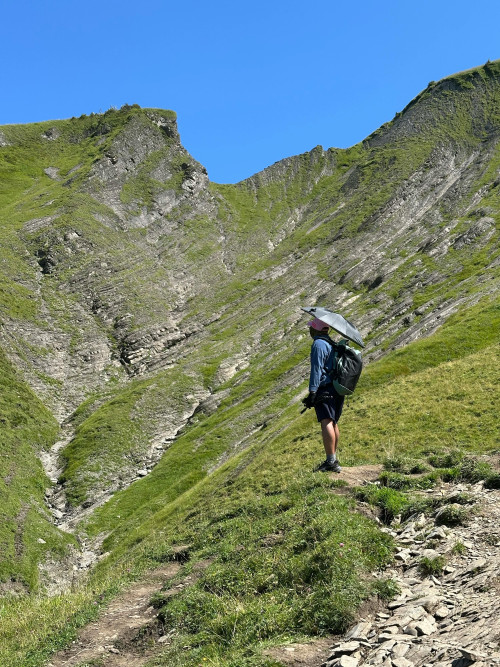
21st Sep, 2025
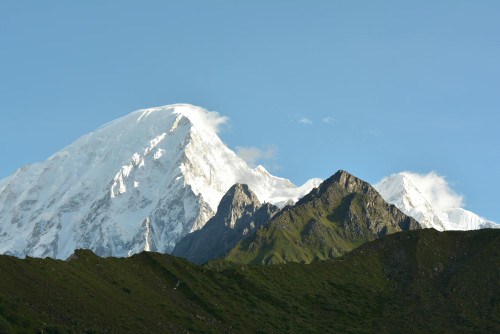
18th Sep, 2025

14th Sep, 2025

3rd Sep, 2025

28th Aug, 2025
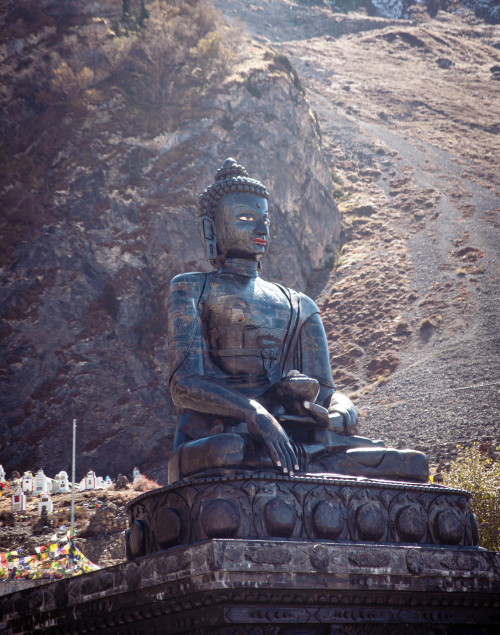
25th Aug, 2025



